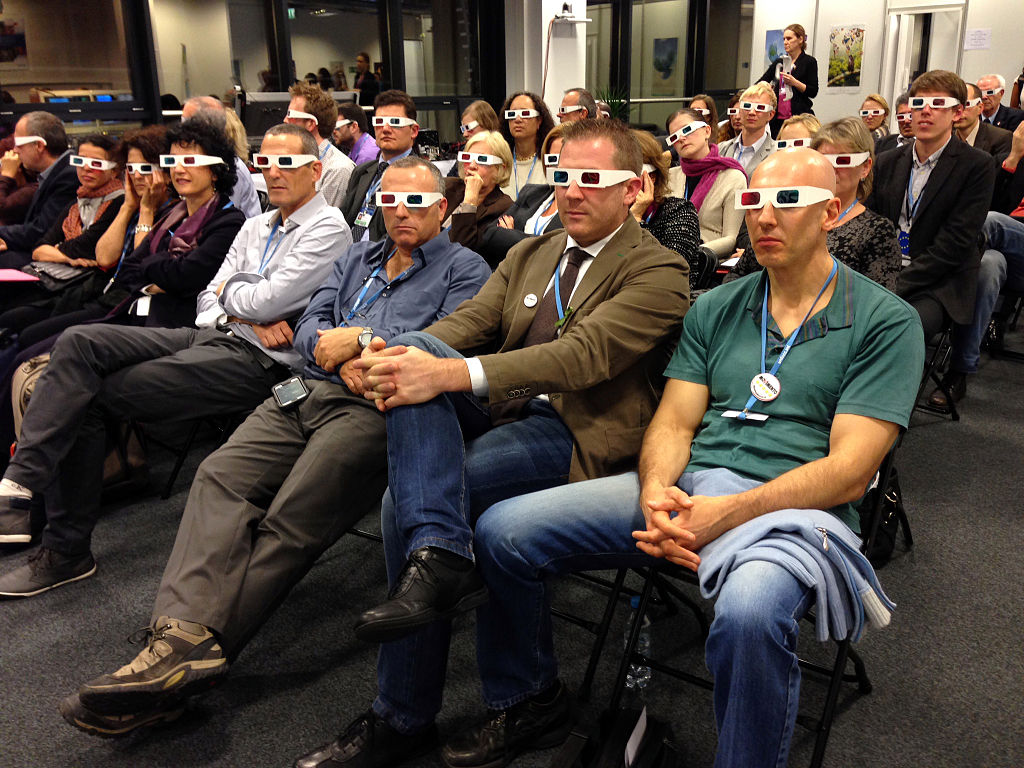March 28, 2015: The tech business has always been fascinated by VR (Virtual Reality). 20 years ago, VR pioneers were demonstrating helmets and headsets at Comdex and PC Expo. Adding “3-D” to any computing environment seemed as natural as adding the words “Hi Fi” to radio equipment back in the 1950s. There were even VR markup languages (remember VRML?) that promised to “make the Web 3D” and later, a proliferation of 3D like Web monitoring tools (remember Visitorville? – it’s still around).
It’s 2016, and 3D headsets have generally come a long way in 20 years, but Oculus Rift, from Oculus VR, is a product that’s closer than any has come to the holy grail of mass adoption. After working for months to remove disorienting “motion blur” artifacts from its 3D headset system (which happened whenever a headset user quickly move his/her neck), the company has made Oculus Rift the VR device to beat. And now Facebook, with its acquisition of the company, is poised to add the missing 3rd dimension to its services.
The question is, how will Facebook use the dimension of apparent depth to improve the experience of its users?
Moving Beyond the 2D Social Model
Imagine if one could look beyond the 2D page and “reach out” — in 3D space — to clusters of posts or content that have receded in time, but not in relevance.
All of today’s social media services work this way, and there’s nothing wrong with the model — which, after all, represents the cumulative presentational wisdom of several generations of UI engineers. But none of this was designed with the social media space — which is node-based, not linear — in mind.
But imagine if one could look beyond the 2D page and “reach out” — in a 3D space — to clusters of posts or content that have receded in time, but not in relevance. Facebook’s algorithms could gather these clusters together in a visual “field” of meaning that’s not possible today. Users could share clusters they’ve found with other users, making friends along the way, acquiring likes, or other “tokens” appropriate in this game-like environment. “Facebook VR” (if that’s what it winds up being called) could also provide a way for users to navigate the actual, node-based Knowledge Graph in a more intuitive way, more spacecraft-like way, instead of scrolling and clicking in a 2D-constrained space.
Whither Advertising?
Branded messages should only be introduced to the user at 3D coordinate points where they are expected.
Social Media is Already a Game!
Facebook, Twitter, and LinkedIn area already game-like environments, in which players vie for fame and social fortune (likes, followers, and other proxies for approval), tweet (or snipe) at other users on the social network, and cheer on or support others. Popularity — of the things that you like — or popularity applying to one’s own person — shifts constantly.
Generally, however, one’s activities across these existing social gamescapes do not constitute a coherent adventure. While much time is spent on social networks, much isn’t goal oriented at all. But imagine what could happen if social individuals could form “teams” that could pursue cooperative (or competitive) activities online, for fun, profit, status, or other personal or professional goal?
Such team-based social games might be fun, or they also might be very serious. Imagine what might happen if activists on Facebook, angry over the behavior of a particular brand, decided to collectively “storm” the brand fortress en masse in a 3D swarm while the media (contacted in advance, of course) gaped in amazement? This behavior already happens in Facebook’s 2D interface – but it really can’t be experienced in a real-life manner.
For better or worse, 3D social media will change all that.
Visualizing “InfluenceSpace”
Facebook has always been a comparison engine that it is naturally amenable to comparisons that are spatial in nature.
The “book” in “Facebook” honors the 2D page paradigm, but the company is not bound to it. Facebook has always been a comparison engine (“how popular am I?” “do I look fat?” “where has she been?” “who is he with now?”) that it is naturally amenable to comparisons that are spatial in nature (“how large is my social footprint relative to x?” “where exactly am I in influence space when I converse with her?”). With 3D social media, such comparisons could occur across an actual world space, allowing people to “fly” over people in their network as naturally as people click through today in 2D browsers.
The possibilities – serious, fun, and frightening – of social media in a 3D space are endless. It’s too soon to know whether Facebook 3D would be a hit or flop with its billions of users, but the Oculus Rift headset provides a new platform for experimentation that will likely be a fun one.
Of course, the history of 3D is filled with examples of cool dimensional technologies that disappointed (for example, Second Life). And cool technologies – like today’s generation of mobile devices – had many failed forebearers (remember the Apple Newton?). So my bet is that we’re not going to be flying over our LinkedIn groups, virtually strafing our detractors on Twitter, or leading our followers in a V-formation through Facebook’s 3D social hyperspace anytime this year.
Next year, however, is anybody’s guess.
Have a question about social media, SEO, content marketing, or other good ways to reach your best audiences online? Contact us.
- 10 Mistakes to Avoid When Using QR Codes for Marketing - September 20, 2023
- Kevin Lee on How AI Changes the SEO Landscape - August 31, 2023
- The Power of Compound Marketing: Kevin Lee Presents @ 1MediaWorld 2023 Global Conference - March 7, 2023

